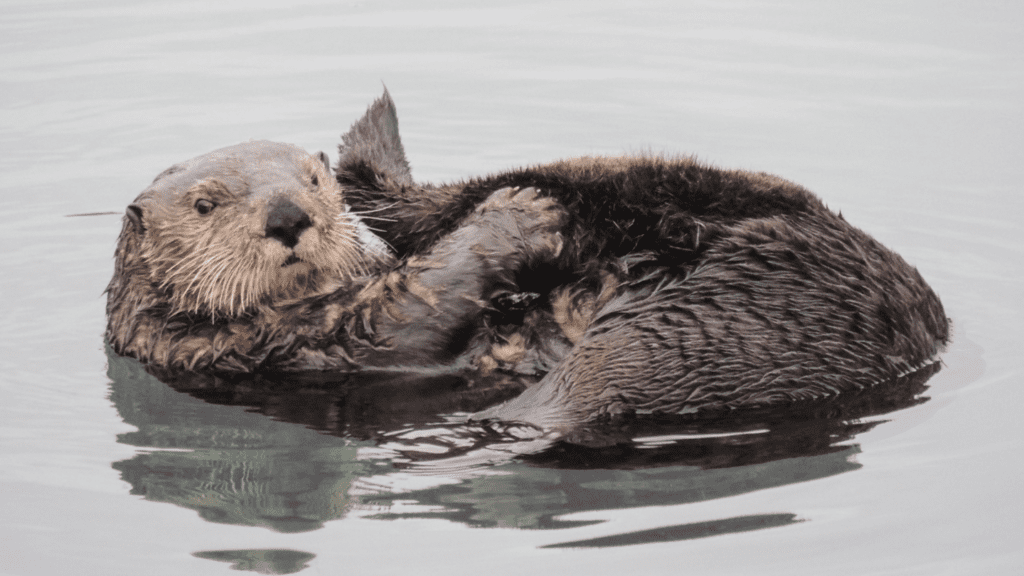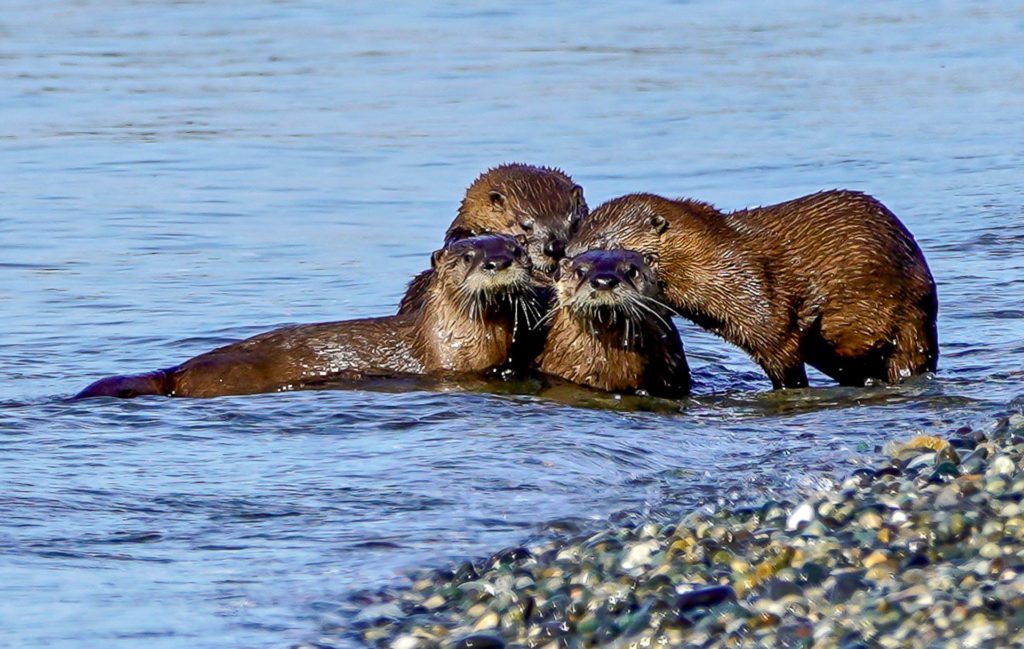Otter Sighting?
It is only natural to assume that an otter seen on the Oregon Coast is a sea otter. However the North American river otter is a regular inhabitant of estuaries, and an occasional visitor to ocean intertidal habitats. How do you tell them apart?
Did you see this or that?


A total of 13 otter species are found worldwide, including 7 distinct genera. Otters are mostly dependent on freshwater habitats, but 4 species are either residents or occasional inhabitants of marine environments. Of these, only 2 species are adapted to a strictly marine existence: the sea otter (Enhydra lutris) distributed along the North Pacific Ocean and the marine otter (Lontra felina) found in the southeast Pacific Ocean, and also associated with kelp and seaweed.
However, the only two otter species native to the Oregon coast are the North American river otter and sea otter. While lone wandering sea otters are seen occasionally in Oregon, most sightings turn out to be river otters.
Despite the name, river otters can also be found foraging in the ocean and running along the beaches. They can often be seen in packs of 3-4 individuals.
If you think you have seen a sea otter in Oregon, please contact Oregon Department of Fish & Wildlife or the U.S. Fish & Wildlife Service to report your sighting! You can also email Info@ElakhaAlliance.org with any sea otter spotting along the Oregon coastline.
How do you tell the otters apart?

Sea Otter
- Weight: 50-100 pounds
- Very buoyant, floats on back when resting, grooming, or eating
- Propels in water with large rear feet/flippers
- Subtidal foraging
- Shorter flat tail
- One pup a year
- Rarely comes on land, and lives the majority of their life in the ocean

North American River Otter
- Weight: 15-30 pounds
- Belly swimmer, rides low in the water
- All four feet similar size
- Food eaten mostly onshore
- Intertidal/shoreline foraging
- Long round tail
- Multiple pups a year
- Dens on land – only spends 1/3 of their lives in water

